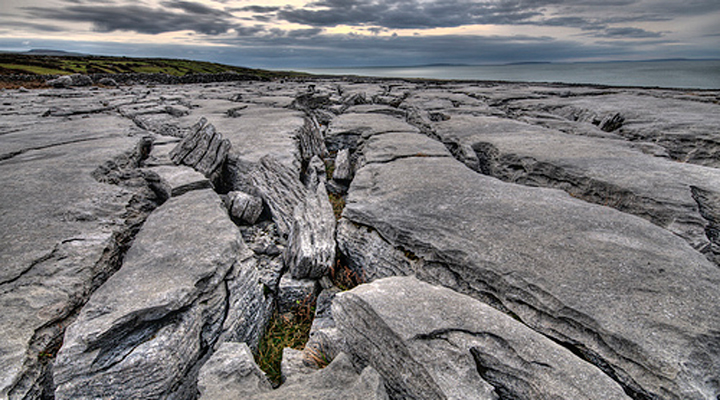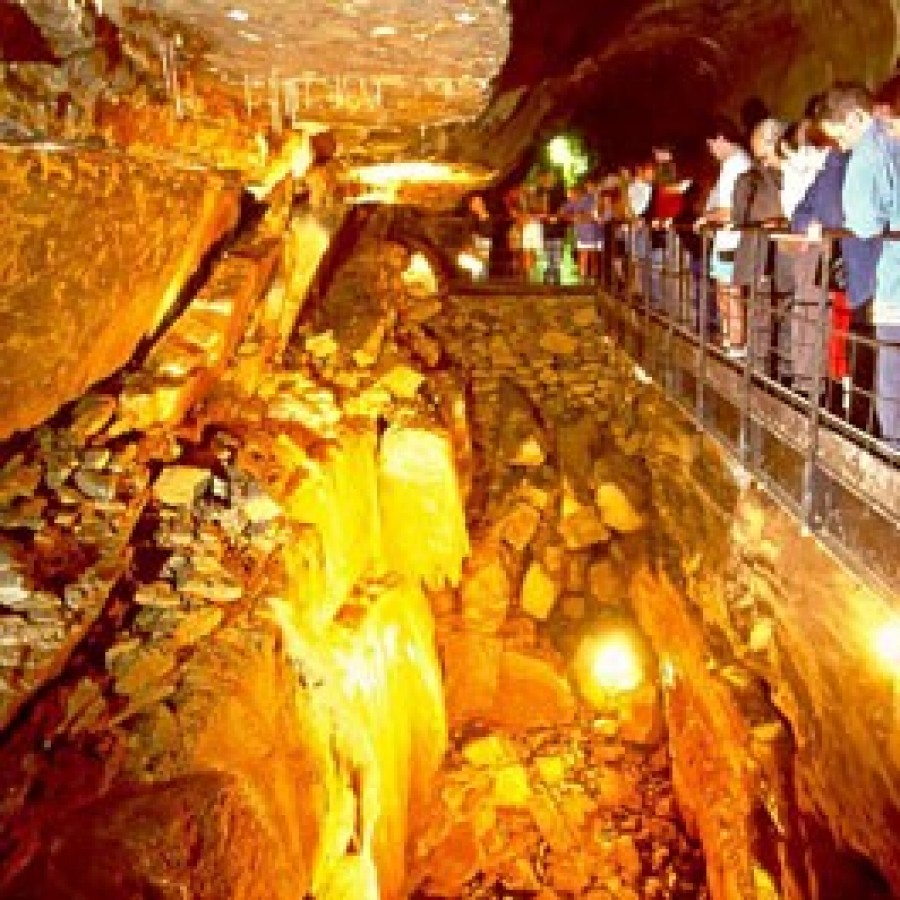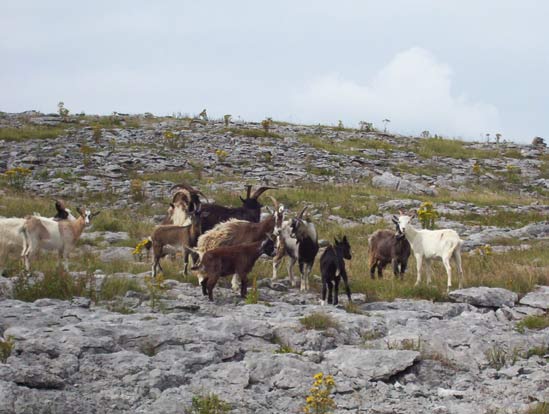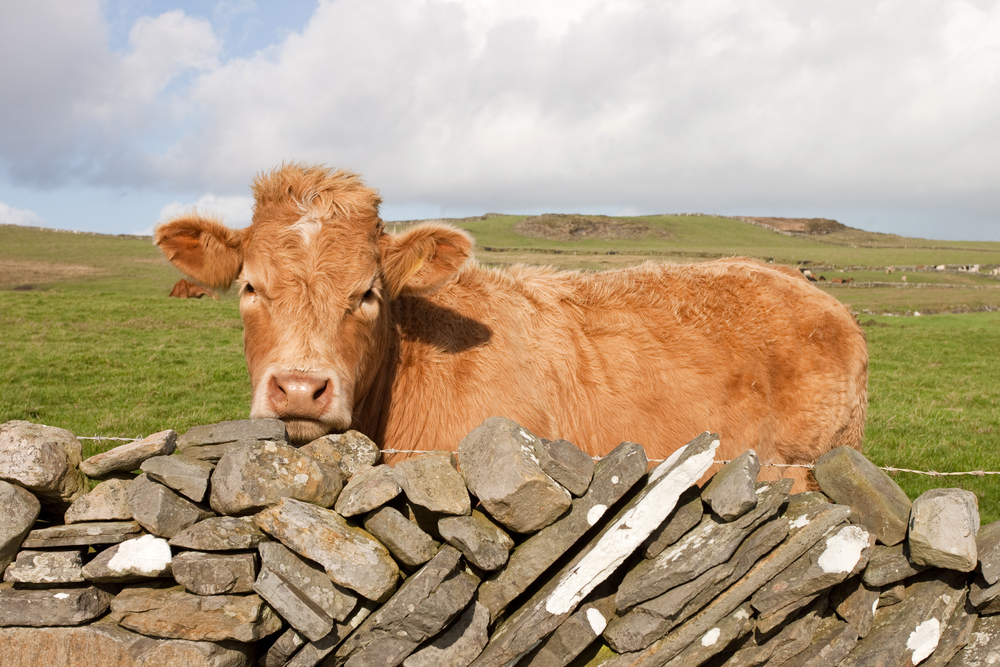
The Burren
The Burren, or the Rocky Place reveals a lot in its name. The Burren is made up of limestone, a porous young rock substance formed at the bottom of the sea. Over time due to the plates of the planets movement (Plate tectonics), this limestone has risen from the sea bed to form much of the Irish landscape. Here, however the limestone is bare, barren exposed stone, making this place quiet unique. The plateaus of limestone were exposed to glaciers, several ice ages, over the millions of years of its formation. As these glaciers melted, this melted water moved above the rock and below the ice to erode intricate patterns, many of which have geological classifications. It is these patterns in the stone that make ‘the Burren’ so unusual, often described as a moody place due to how the light reflects on the grey stone. Thus you will find a dry, arid, moonlike landscape of limestone.
Looking closer, you will find a wide variety of Burren flora, representing more than 75 per cent of the biodiversity in Ireland in just less than a per cent of the country. The Burren is home to 1,100 species of plants out of the 1,400 in Ireland. It is the only place in Europe where Mediterranean and Arctic Alpine plants grow together in perfect harmony. Rare flowers include Lady’s Tresses, Bee Orchids, Fly Orchids, Irish Orchids, Pyramidal Orchids, Lesser Butterfly Orchids, and Fragrant Orchids. This makes it a treasure chest for botanists to visit, especially come spring time. The secret of the diversity of this area comes from its glacial artic history and its temperate climate.
The Burren is Ireland’s most important cave area. This strange hundred square mile limestone “desert”, where only one river reaches the sea by an over ground course, has more active stream caves than any other part of Ireland. Over 35 miles of cave passages have actually been surveyed; this area is also full of large caves that can be explored with its accompanying stalactites and stalagmites.
Keep an eye out for the feral Burren Goat that roams the hills of this area. These goats get culled frequently as they can be seen as a threat to the biodiversity of the area. There is about 1,000 of these goats roaming the upper-Burren area.
Other mammals living in this environment would include the Pygmy Shrew, a little ratlike mammal that is only 5 grams in weight and would fit in a matchbox. Among the seven species of bats inhabiting this part, is the lesser known Horseshoe Bat, which is endangered in an international context.
As we drive through the Burren you will notice the dry stone walls that mark boundaries all the way to the tops of the hills. Dry stone walls are typical of the west of Ireland. They range in size and style and have been maintained for centuries under a variety of state and community initiatives. Some walls are said to be as old as the Neolithic; these are found in Connemara in a particular site called the Ceide Fields. While others, are from the Iron Age where clans/tribes built their forts on the top of hills, excellent views above, of the sea and the surrounding area. More commonly the stone walls of this area date from 2 distinct times; Resettlement and Famine. The resettlement of Gaelic families was common place during the 16th and 17th centuries, where families who rebelled against English settlers lost their lands on the east to them and were sent to these harsh areas of the island as a punishment. During particular times of hardship like the Famine of 1847, poor houses were set up. These houses were extremely difficult places to survive; disease was rife, hunger, malnourishment and unhygienic conditions were the norm. The Workhouse was an extension of the Poor-house; people had to work for food. One of the key types of work was restoring and building these dry stone walls which are a symbol of our turbulent past.
To visit the Burren book our Cliffs of Moher tour today
Recent posts

.jpg)








.jpg)




